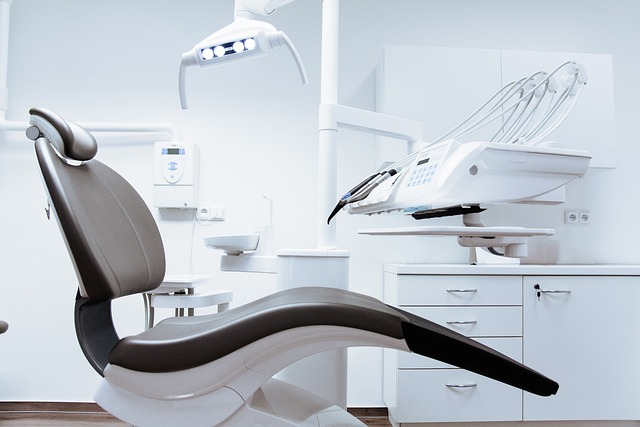Post-Extraction Care: Optimal Duration for Gauze Placement
Welcome to our informative article on post-extraction care and the optimal duration for gauze placement. Whether you’ve just undergone a tooth extraction or are simply curious about the aftercare process, we’re here to help you navigate this crucial phase with ease. We understand that taking care of your oral health can sometimes feel overwhelming, but fear not, our friendly guide will provide you with all the necessary information to ensure a smooth recovery. In this article, we will specifically focus on the ideal duration for gauze placement after a tooth extraction, shedding light on why it’s important, how long you should keep it in place, and what to expect during your healing journey. So, put your worries aside and let’s dive into the world of post-extraction care!
1. Importance of Post-Extraction Care for Optimal Healing
After undergoing a tooth extraction, proper post-extraction care is crucial for optimal healing. Taking care of your mouth and following a few simple steps can help minimize pain, reduce the risk of infection, and promote faster healing. Here are some important considerations for post-extraction care:
- Reduce swelling: Apply an ice pack to the affected area for the first 24 hours after the extraction. This will help reduce swelling and discomfort.
- Control bleeding: Bite down gently on a piece of gauze placed on the extraction site to control bleeding. Change the gauze every 30 to 45 minutes until the bleeding stops.
- Avoid sucking or spitting: Avoid using a straw, spitting forcefully, or rinsing your mouth vigorously for at least 24 hours. These actions can dislodge the blood clot and delay healing.
Take prescribed medication: Your dentist may prescribe pain medication or antibiotics to prevent infection. Follow the instructions carefully and complete the full course of antibiotics, if prescribed, even if you feel better.
Remember to maintain proper oral hygiene during the healing process. Brush your teeth gently, taking care to avoid the extraction site, and rinse your mouth with warm saltwater several times a day. It’s also important to stick to soft foods for the first few days and gradually introduce solid foods as you heal. If you experience severe pain, prolonged bleeding, or any concerning symptoms, don’t hesitate to contact your dentist for further guidance.

2. The Role of Gauze in Post-Extraction Care: A Step-by-Step Guide
In this section, we will explore the role of gauze in the post-extraction care process. Once a tooth has been extracted, it is essential to properly manage the extraction site for a smooth and healthy healing process. Gauze plays a crucial role in this, helping to control bleeding and protect the extraction site from infection. Follow this step-by-step guide to understand how to use gauze effectively for post-extraction care:
Step 1: Be prepared!
- Have clean gauze pads or sterile gauze ready before your scheduled tooth extraction.
- Ensure your hands are washed thoroughly with soap and water to maintain hygiene.
Step 2: Place the gauze pad correctly
- Gently fold the gauze pad to create a small wad that fits comfortably inside your mouth, next to the extraction site.
- Apply gentle pressure by biting down on the gauze to aid in blood clot formation and control bleeding.
Remember, it is important not to disturb the blood clot forming in the extraction site as it promotes healing.

3. Understanding the Ideal Duration for Gauze Placement After Tooth Extraction
After a tooth extraction, proper care is essential to promote healing and prevent complications. Gauze placement plays a crucial role in this process. Understanding the ideal duration for gauze placement can help ensure a smooth recovery. Here are some key points to keep in mind:
- Immediate post-extraction: It is recommended to keep the gauze in place for at least 30 minutes after the tooth extraction. This allows the clot to form and helps control bleeding.
- Extended bleeding: If bleeding persists or restarts after removing the initial gauze, replace it with a new piece and maintain gentle pressure for an additional 30 minutes. This will aid in the formation of a stable clot.
- Switching to saline: Once the bleeding has stopped, gently remove the gauze and rinse your mouth with a warm saltwater solution. This promotes cleanliness and speeds up the healing process.
While gauze placement is crucial, it is important not to leave it in for too long. Leaving gauze in place for extended periods can hinder proper healing and increase the risk of infection. Remember, everyone’s healing process is unique, so it’s best to consult your dentist for personalized guidance on the ideal duration for gauze placement after tooth extraction. Take care of yourself and enjoy a smooth recovery!

5. Factors Influencing the Duration of Gauze Placement: Insights from Dentists
When it comes to the duration of gauze placement after dental procedures, dentists play a crucial role in determining the appropriate timeframe. Their knowledge and experience in this field provide valuable insights into the various factors influencing the duration of gauze placement. By understanding these factors, patients can ensure successful healing and minimize discomfort.
Here are some key factors dentists consider when determining how long gauze should be placed:
- Type of procedure: The type of dental procedure performed greatly influences the duration of gauze placement. Complex procedures such as extractions or implant placements may require longer gauze placement, typically ranging from 30 to 60 minutes, to control bleeding and promote clot formation.
- Bleeding severity: The amount of bleeding experienced during and after the procedure is another crucial factor. Dentists evaluate the severity of bleeding to determine how long gauze should be kept in place. In cases of minor bleeding, gauze placement for 15 to 20 minutes may be sufficient, while more extensive bleeding may require extended placement.
- Medical history: Dentists take into account a patient’s medical history, including any bleeding disorders or medications that might affect clotting, when deciding on the duration of gauze placement. Patients with conditions like hemophilia or those taking blood-thinning medications may require longer gauze placement.
By keeping these factors in mind, patients can have a better understanding of why dentists recommend certain lengths of gauze placement. Remember, it’s always important to follow your dentist’s instructions for post-procedure care to ensure optimal healing and a successful recovery.

10. Final Thoughts: Optimizing Your Post-Extraction Care Journey for a Speedy Recovery
After undergoing a tooth extraction, it is important to take proper care of your mouth to ensure a speedy recovery. By following a few simple steps, you can optimize your post-extraction care journey and promote healing. Here are some tips to help you on your way:
1. Keep your mouth clean: Gently rinse your mouth with a warm saltwater solution multiple times a day. This not only helps keep the extraction site clean but also reduces swelling and discomfort. Remember not to spit forcibly to prevent dislodging the blood clot.
2. Take it easy: Rest and avoid any strenuous activities for the first 24 hours after your extraction. This allows your body to focus on healing. Additionally, avoid drinking through a straw or smoking, as these can disrupt the clot and delay healing.
3. Manage pain and swelling: Over-the-counter pain relievers can help alleviate any discomfort. Applying a cold pack to your cheek for 10-15 minutes at a time can also reduce swelling. Be sure to follow your dentist’s instructions for pain management medication.
4. Eat soft foods: Stick to a soft-food diet for the first few days post-extraction. Opt for foods such as yogurt, mashed potatoes, and soups. Avoid hard, chewy, or spicy foods that may irritate the extraction site.

Frequently Asked Questions
Q: What is post-extraction care?
A: Post-extraction care refers to the steps and precautions taken after a tooth extraction to promote proper healing and minimize any complications.
Q: Why is post-extraction care important?
A: Post-extraction care plays a crucial role in the healing process by reducing the risk of infection, controlling bleeding, and preventing complications like dry socket.
Q: What is gauze placement and its significance in post-extraction care?
A: Gauze placement involves using sterile gauze pads or packs to control bleeding and promote clot formation at the extraction site, aiding in the healing process.
Q: How long should gauze be kept in place after an extraction?
A: Ideally, gauze should be kept in place for about 30 minutes after an extraction, applying gentle pressure to control bleeding. However, this may vary depending on the instructions provided by your dentist or oral surgeon.
Q: Can the duration of gauze placement be extended for better results?
A: It is generally not recommended to keep the gauze in place for an extended period as it can interfere with the formation of a stable blood clot, prolong bleeding, and delay healing.
Q: What should be done if bleeding persists even after removing the gauze?
A: If bleeding persists after removing the gauze, gently rinse your mouth with cold water and bite down on a clean, moistened tea bag or folded gauze for an additional 30 minutes. If bleeding continues, contact your dentist or oral surgeon promptly.
Q: How often should gauze be changed during the post-extraction period?
A: Typically, gauze should be changed every 30 minutes until bleeding is under control. Once bleeding has subsided, it may not be necessary to continue using gauze unless advised otherwise by your dentist or oral surgeon.
Q: Are there any alternatives to gauze in post-extraction care?
A: In some cases, your dentist may recommend alternatives to gauze, such as using a sterile cotton ball or applying a hemostatic agent, depending on the nature of the extraction and individual circumstances.
Q: Can I eat or drink with gauze in place?
A: It is recommended to avoid eating or drinking until the bleeding has subsided. Once bleeding has stopped or significantly reduced, you may carefully remove the gauze to eat or drink. However, it is best to consume only soft, cool foods and avoid using a straw to prevent dislodging the blood clot.
Q: Are there any specific instructions to follow regarding gauze placement after wisdom tooth extraction?
A: After wisdom tooth extraction, your dentist or oral surgeon will provide detailed instructions specific to your case, including any additional measures or concerns related to gauze placement. It is essential to follow these instructions closely for optimal healing and recovery.
Conclusion
In conclusion, caring for your mouth after a dental extraction is crucial in ensuring a smooth and speedy recovery. Now that you understand the optimal duration for gauze placement, you can confidently take the necessary steps to avoid any potential complications. Remember to follow your dentist’s post-extraction instructions and contact them if you have any concerns or questions.
By adhering to proper gauze placement for the recommended timeframe, you can minimize bleeding, prevent infection, and promote the formation of a healthy blood clot. Be sure to change your gauze pads regularly and maintain good oral hygiene practices to facilitate a successful healing process.
While it may feel a bit uncomfortable or inconvenient to have gauze in your mouth, know that it is a temporary measure to enhance your oral health. Within a few days, you will be well on your way to enjoying a pain-free and functional mouth once again.
Always keep in mind that each person’s recovery process is unique, and factors such as age, medical history, and the complexity of the extraction may influence the optimal duration of gauze placement. If you have any doubts or experience excessive bleeding or prolonged discomfort, reach out to your dentist to ensure you receive the personalized care you need.
We hope this article has provided you with valuable insights into post-extraction care and the importance of proper gauze placement. Remember, your oral health is an essential part of your overall well-being, so don’t hesitate to take the necessary steps to ensure a smooth and speedy recovery after any dental procedure.
Take care of your oral health, follow your dentist’s advice, and soon you’ll be back to flashing that radiant smile once again. Wishing you a pain-free and swift recovery!






